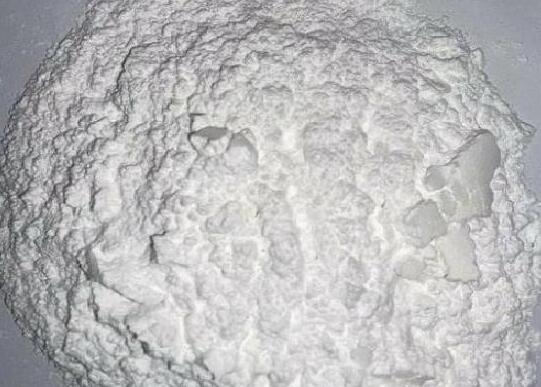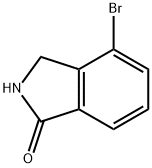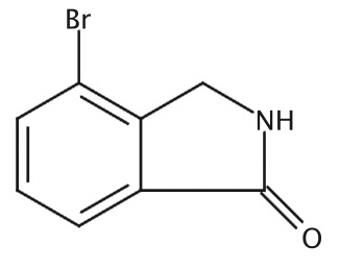4-Bromoisoindolin-1-one: Applications of in Pharmaceutical Synthesis and its Preparation Method
4-Bromoisoindolin-1-one is a synthetic organic compound classified within the isoindoline family. Distinguished by its bromine substitution at the 4-position and a ketone functionality at the 1-position, 4-Bromoisoindolin-1-one possesses distinctive chemical attributes that render it a valuable intermediate in numerous organic synthesis pathways.

Applications in Pharmaceutical Synthesis
4-bromoisoindolin-1-one can be used as organic synthesis intermediate and pharmaceutical intermediate, mainly used in laboratory research and development process and chemical production process.
Preparation Method
To a solution of the 3-bromo-2-bromomethyl-benzoic acid methyl ester (2.74 g, 8.88 [mmol)] in tetrahydrofuran (70 [ML)] at [0℃] was added 30 percent aq. ammonia (10 ml) and the mixture stirred at room temperature under nitrogen for 18 hours. The solvent was removed by evaporation under reduced pressure. The white residue was partitioned between ethyl acetate (50 mi) and 2M citric acid (50 [ML).] The ethyl acetate was dried magnesium sulfate, filtered and solvent removed by evaporation under reduced pressure. The orange oil was dissolved in minimum [Dichloromethane] and purified by flash chromatography on silica gel eluting with a solvent gradient of [Dichloromethane/Methanol] (9: 1) to give the title compound (1.5 g, 80 percent) as a white solid.



![2698-41-1 [(2-Chlorophenyl)methylene]malononitrile Overview of [(2-Chlorophenyl)methylene]malononitrile Burn injury of [(2-Chlorophenyl)methylene]malononitrile ?](/NewsImg/2024-04-10/6384836608173332802477739.jpg)